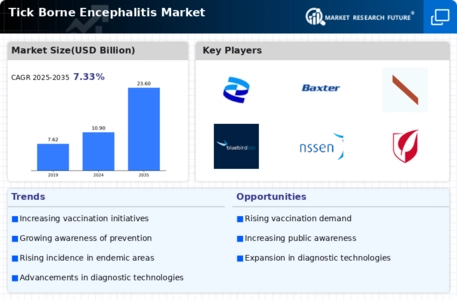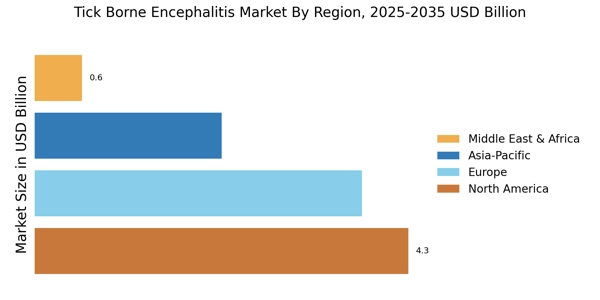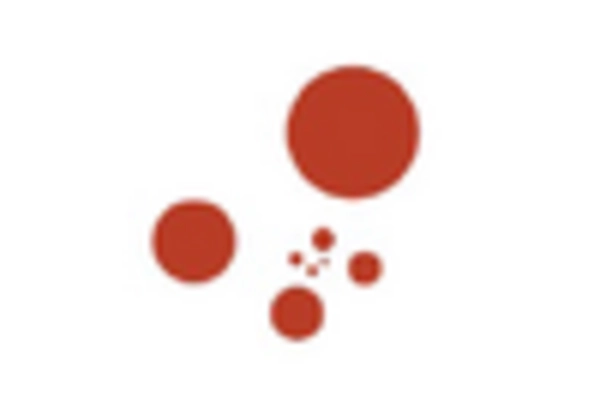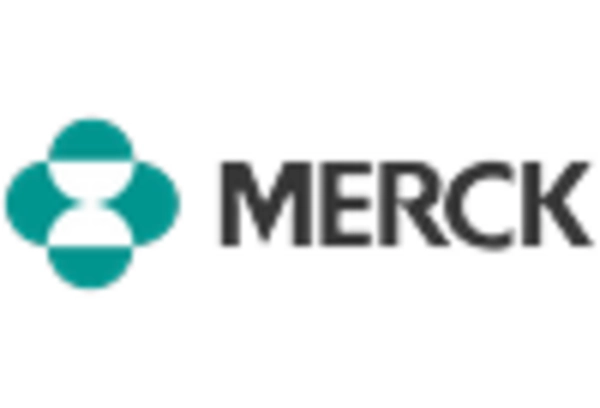Government Initiatives and Funding
Government initiatives aimed at combating Tick Borne Encephalitis are crucial for the Tick Borne Encephalitis Market. Various countries have implemented vaccination programs and public health campaigns to raise awareness about TBE. For instance, funding for research and development of vaccines has seen a notable increase, with several governments allocating resources to support innovative solutions. This financial backing not only facilitates the development of new vaccines but also enhances the distribution of existing ones. Furthermore, public health policies that promote vaccination can lead to higher immunization rates, thereby reducing the incidence of TBE. As governments continue to prioritize TBE, the market is likely to experience significant growth driven by these initiatives.
Rising Travel and Outdoor Activities
The increase in travel and outdoor activities is a significant driver for the Tick Borne Encephalitis Market. As more individuals engage in outdoor pursuits such as hiking, camping, and other recreational activities, the risk of exposure to ticks rises. This trend is particularly evident in regions where TBE is endemic, prompting travelers to seek preventive measures, including vaccination. The tourism industry has also recognized the importance of educating travelers about TBE risks, leading to partnerships with health organizations to promote vaccination. Consequently, the rising popularity of outdoor activities is likely to contribute to an uptick in vaccine demand, thereby positively impacting the market.
Growing Research and Development Efforts
The growing emphasis on research and development in the field of Tick Borne Encephalitis is a vital driver for the Tick Borne Encephalitis Market. Pharmaceutical companies and research institutions are increasingly focusing on developing novel vaccines and therapeutic options to combat TBE. This surge in R&D efforts is fueled by the need for effective solutions to address the rising incidence of TBE. Collaborative initiatives between academia and industry are fostering innovation, leading to the discovery of new vaccine candidates and treatment modalities. As these R&D efforts progress, the market is expected to benefit from the introduction of advanced products that can effectively mitigate the impact of TBE.
Technological Advancements in Diagnostics
Technological advancements in diagnostic tools are transforming the Tick Borne Encephalitis Market. The development of rapid and accurate diagnostic tests enables healthcare providers to identify TBE more effectively, which is essential for timely treatment. Innovations such as polymerase chain reaction (PCR) tests and serological assays have improved the accuracy of TBE diagnosis, leading to better patient outcomes. As diagnostic capabilities expand, healthcare professionals are more likely to recognize and report cases of TBE, which could lead to increased demand for vaccines and treatments. The integration of these advanced diagnostic tools into healthcare systems is expected to bolster the market, as early detection plays a critical role in managing TBE.
Increasing Incidence of Tick Borne Encephalitis
The rising incidence of Tick Borne Encephalitis (TBE) is a pivotal driver for the Tick Borne Encephalitis Market. Reports indicate that the number of reported cases has been steadily increasing, particularly in regions where ticks are prevalent. This trend is likely to escalate due to climate change, which may expand the habitats of tick populations. As awareness of TBE grows, healthcare systems are compelled to enhance their response strategies, thereby increasing demand for vaccines and treatments. The World Health Organization has noted that TBE is endemic in several countries, which further emphasizes the need for effective public health measures. Consequently, the increasing incidence of TBE is expected to drive market growth as stakeholders seek to address this public health challenge.


















Leave a Comment